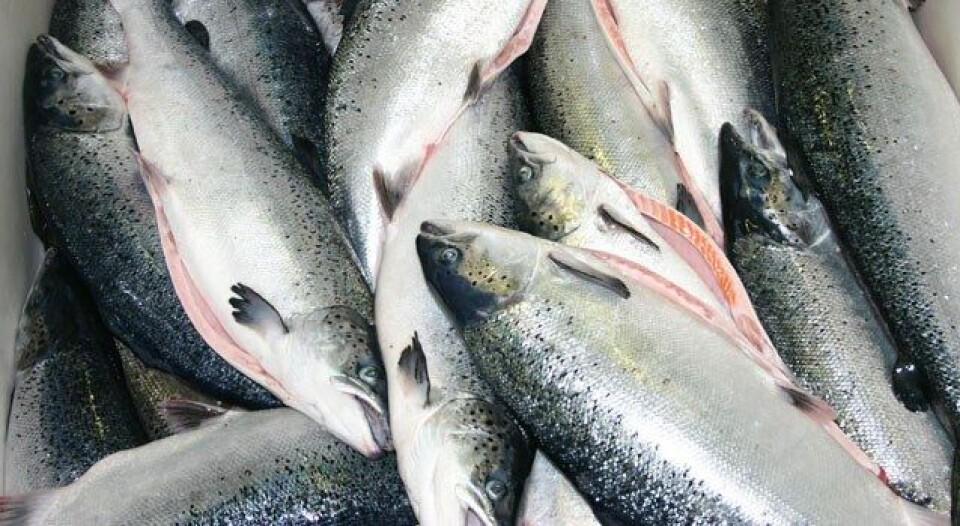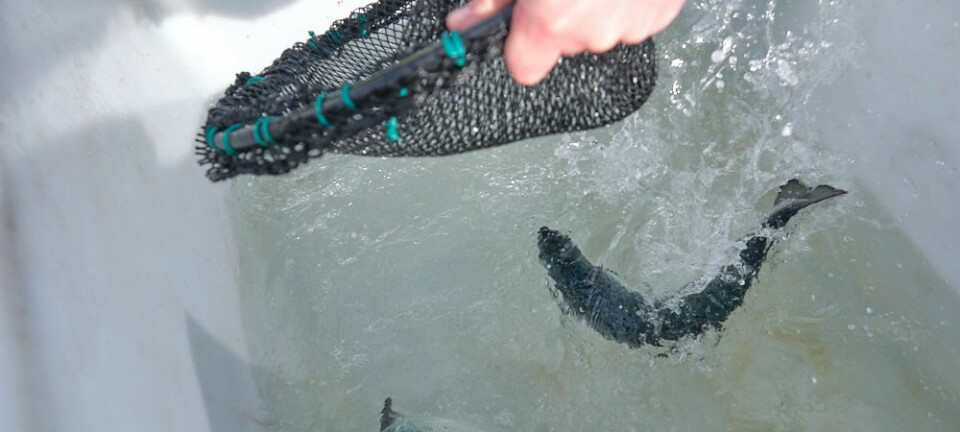
Salmon production dips 4%
Scottish salmon production fell by 4.1% between 2014 and 2015, dropping to 171,722 tonnes.
This statistic was revealed in the Scottish Fish Farm Production Survey 2015, which was published yesterday. Despite the 7,300 tonne decrease, it is still the second highest figure recorded in Scotland to date, while the industry estimates an increase to 177,857 tonnes during 2016.
Responding to the figures, Scott Landsburgh, chief executive of Scottish Salmon Producers’ Organisation, said: “Last year saw the second highest production of salmon farming ever delivered in Scotland. Year to year fluctuations are to be expected however, the trend remains generally positive with a production estimate of something around 177,000 tonnes this year.
“Tonnage was down slightly in 2015 because we harvested the salmon at a smaller size. This was mainly because there were some environmental issues like jellyfish and algal blooms which are damaging to fish health.
“During that same year, we also saw significant developments in the farming of lumpsuckers and wrasse which live alongside salmon to keep them healthy. This comes after many years of research and development so it’s great to see that investment offering another environmentally friendly way of looking after our salmon”.
Marine sites
In 2015, marine production of salmon was undertaken by 16 businesses farming 254 active sites. This is a decrease of two businesses and six active sites compared with 2014.
Total production during 2015 was 171,722 tonnes, a decrease of 7,300 tonnes (4.1%) on the 2014 figure. This is the second highest level of production recorded in Scotland.
The total number of staff in marine salmon production in 2015 increased by 38 to 1,363. Full time staff increased by 65 to 1,256 whilst part time staffing decreased by 27 to 107.
Freshwater sites
In 2015, freshwater production was undertaken by 25 businesses at 87 sites. The number of businesses operating decreased by one and the number of active sites decreased by nine from 2014.
The total number of smolts produced in 2015 decreased by 433,000 (1%) to 44.6 million. The number of ova laid down to hatch decreased by 3.8% to 68.2 million with the majority of these (90.2%) being derived from foreign sources. In 2015, there was 95,000 ova exported.
The number of staff employed in freshwater salmon production decreased by 15 to 294 persons, 239 full time and 55 part time.
Trout record
In 2015, rainbow trout production was carried out by 24 businesses operating 45 active sites, this was a decrease of one active site compared to 2014.
Total production in 2015 increased by 2,706 tonnes (46%) to 8,588 tonnes. This is the highest ever level of rainbow trout production recorded in Scotland and was due to increased marine production (4,678 tonnes compared to 1,909 in 2014).
The number of ova laid down to hatch increased by 1,081,000 (9.8%) on the 2014 figure to 12,121,000. The proportion of ova from GB broodstock increased to 7.4% of the total sourced. The number of fish imported to Scotland from outwith GB was 746,000, representing an increase of 72,000 compared with 2014.
The number of staff employed in 2015 increased by 13 to 126 persons. The number of full time staff increased by 17 whilst part time staff decreased by four. Productivity, measured as tonnes produced per person, increased by 31% to 68.2.
Other species
There has been a continued interest in the diversification of aquaculture. In 2015, brown/sea trout production decreased by six tonnes to 42 tonnes while halibut production decreased by 10 tonnes to 56 tonnes.
Production estimates forecast an increase in brown/sea trout (58 tonnes) and halibut (90 tonnes) in 2016.
In 2015, lumpsucker and various species of wrasse were cultured for use as a biological control for parasites in the marine Atlantic salmon industry, with 2.3 million and 8 million ova being laid down to hatch respectively.
Staff numbers in 2015 increased by one to 50 persons.























































